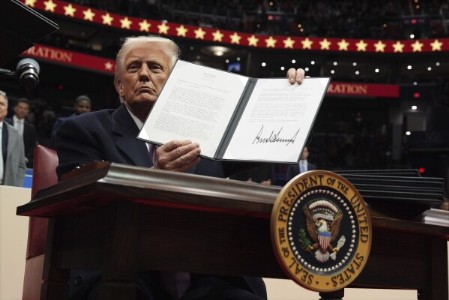Keeping an eye on Doklam, China constructing villages, outposts inside Bhutanese territory
Total Views | 176
Beijing, May 10: In yet another provocative move, China has been constructing a previously unnoticed network of roads, buildings, and military outposts deep in a sacred valley in Bhutan since 2015 and also planting settlers, security personnel, and military infrastructure within the territory internationally and historically understood to be Bhutanese.
China had announced in 2015 that a new village, called Gyalaphug in Tibetan or Jieluobu in Chinese, had been established in the south of the Tibet Autonomous Region (TAR). However, an article, titled “China Is Building Entire Villages in Another Country’s Territory” of Foreign Policy Magazine describes how, since 2015, the TAR authorities rapidly constructed "a previously unnoticed network of roads, buildings, and military outposts in Tibet."
In his report, he stated that it is the development of China's long-running efforts to outmaneuver India and its neighbours along their Himalayan borders. This new construction is part of a major drive by Chinese President Xi Jinping to fortify the Tibetan borderlands.
Also Read: Chinese document claims Chinese military discussed weaponizing coronaviruses back in 2015
Its aim is to force the Bhutanese government to cede territory that China wants elsewhere in Bhutan to give Beijing a military advantage in its struggle with New Delhi. This involves a strategy more provocative than anything China has done on its land borders in the past. Not only this, this construction openly violates the terms of China's founding treaty with Bhutan, it also ignores decades of protests by the Bhutanese about far smaller infractions elsewhere on the borders, wrote Barnett.
Also Read: China's actions disturbed peace & tranquility of border areas: Jaishankar
This is not the first time that China has tried to build roads in Bhutan before. However, it is mainly in its western areas. Last November, a village called Pangda had been built by the Chinese government in subtropical forest just inside the southwestern border of Bhutan but China denied the claim. Nevertheless, construction for Gyalaphug began five years earlier than Pangda, is far more advanced in its development, and involves the settlement of entire districts, not just a single village, he wrote further.
Robert stated that Ever since 1990, China has offered to give up its claim to 495 square kilometers (191 square miles) of the Beyul if Thimphu will give China 269 square kilometers (104 square miles) in western Bhutan. Those areas—Doklam, Charithang, Sinchulungpa, Dramana, and Shakhatoe—lie close to the trijunction with India and are of far greater strategic importance to China than the Beyul, offering China a foothold only 62 miles from India’s geographic weak point, the 14-mile-wide Siliguri Corridor that connects the Indian mainland to its northeastern territories.




